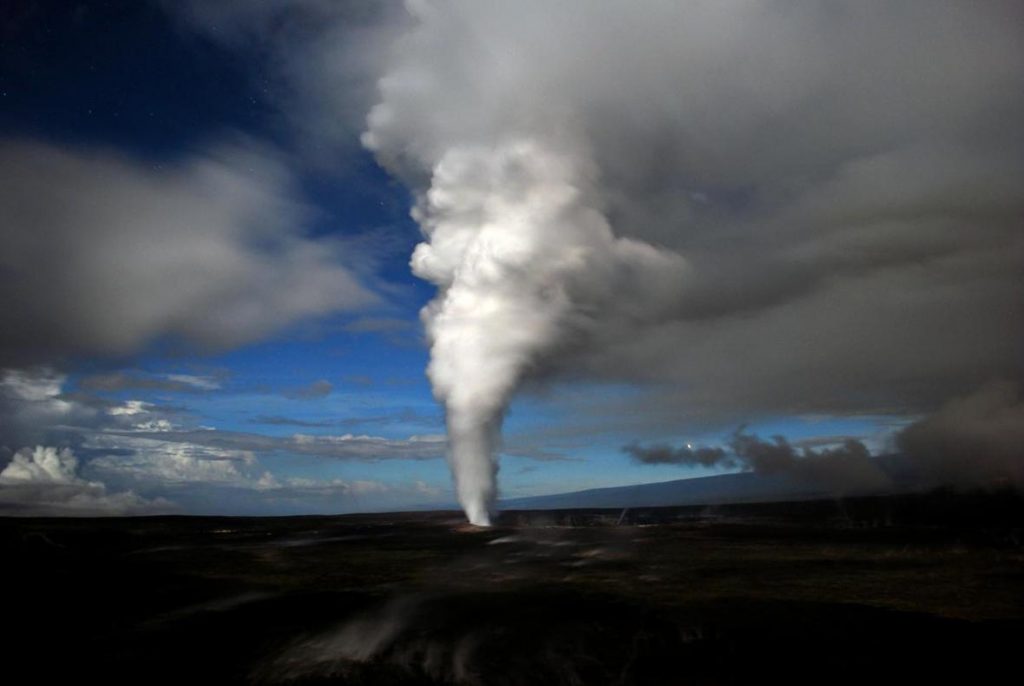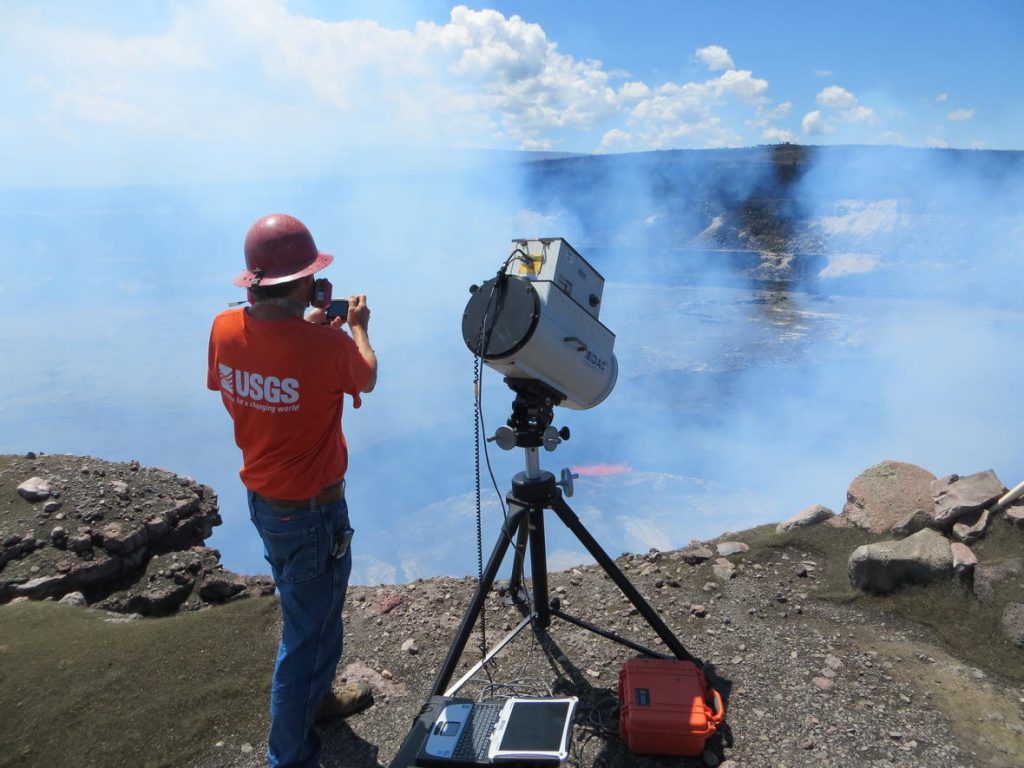New Vog Information Available Online

With stagnant winds present, the plume from Halema‘uma‘u Crater at the summit of Kilauea Volcano, stands straight up, showing off the distant, but bright, full moon. Photo: Michael Poland, US Geological Survey, Hawaiian Volcano Observatory
New informational products about the health hazards of volcanic air pollution—vog—are available through a new interagency partnership.
The site offers comprehensive information and data related to vog and its impacts.
The products include a booklet of frequently asked questions, a brochure and poster about protecting yourself during vog episodes and a web-based “dashboard” that provides comprehensive links to a wide range of vog resources, including vog forecasts and air-quality information.
Vog is the hazy air pollution caused by the volcanic emissions from Kīlauea volcano, which are primarily water vapor (H2O), carbon dioxide (CO2), and sulfur dioxide (SO2) gas.
Kīlauea Volcano, now in its 34th year of nearly continuous eruption, leads to the vog that challenges communities, agriculture, and infrastructure on the Island of Hawai‘i and across the state.
Communities downwind from Kīlauea Volcano’s active vents frequently experience vog as a visible haze or as a sulfurous smell or taste. People exposed to vog report a variety of symptoms, such as eye irritation, coughing, wheezing, sore throats and headaches.
The new products were co-developed by US Geological Survey scientists Tamar Elias and Jeff Sutton at the Hawaiian Volcano Observatory, John Peard and other officials at the Hawai‘i Department of Health, and Claire Horwell from Durham University in the United Kingdom, with participation by Hawaiʻi County Civil Defense and other agencies.
“The diverse partnership has allowed us to develop new, consistent products that more fully address the needs of the community,” Peard.
“The products offer advice on vog protection measures, such as staying indoors, limiting physical activity, and staying hydrated when vog levels are high,”said Horwell. “Providing relevant, up-to-date information to a population living with decades of an ongoing volcanic eruption may help people to better cope with the frequent vog conditions.”
The new, mobile-friendly vog dashboard is hosted by the International Volcanic Health Hazard Network, a clearinghouse for information on the health impacts of volcanic eruptions. All of the new Hawaiʻi vog products are available online, and are accessible through the dashboard.
Scientists at USGS HVO regularly monitor the quantity and composition of gases released from Kīlauea. Among other things, HVO data are used as input for vog models that forecast the volcanic plume dispersion and vog locations.
Horwell’s previous study in 2015 investigated how Hawaiian communities perceive vog, how they protect themselves, and their preferences for receiving advice. The results from the study support the need for consistent online advice from all federal, state and local agencies; increased access to web- and non-web-based information on vog exposure and protection; and updated guidance on how to access resources about vog. HVO’s long involvement in vog studies, coupled with the community studies about perception and needs, led to the development of the new vog informational products.
The new products include a booklet of frequently asked questions, a brochure and poster about protecting yourself during vog episodes and the web-based Hawaii Interagency Vog Information Dashboard that provides comprehensive links to a wide range of vog resources:

USGS Hawaiian Volcano Observatory geochemist measuring gases released from Kïlauea with a Fourier transform infrared (FTIR) spectrometer, an instrument that detects gas compositions on the basis of absorbed infrared light. Photo: Janet Babb, US Geological Survey, Hawaiian Volcano Observatory
What is vog? Description of vog and links to factsheets
Vog and wind forecasts Links to the VMAP vog and NWS wind forecast models
Current air quality Links to real time SO2 and particulate monitoring data
Vog fact sheets Links to the Interagency and USGS fact sheets
Health effects of vog Description of potential health effects of vog exposure
Protect yourself from vog How to protect yourself from vog exposure
Plants and agriculture Effects of vog on plants and agricultureWater
Catchment systems Advice on maintaining water catchment systems
Air purifier information Cleaning the air in your home
Space-based data and images Satellite data on SO2 and particles
Advice for visitors to Hawai‘i Links to National Park Service pages
Scientific literature Relevant articles and publications on vog













